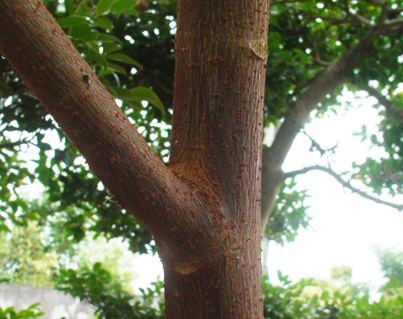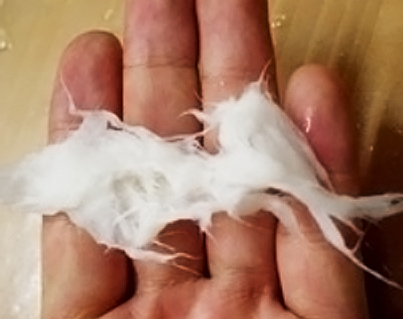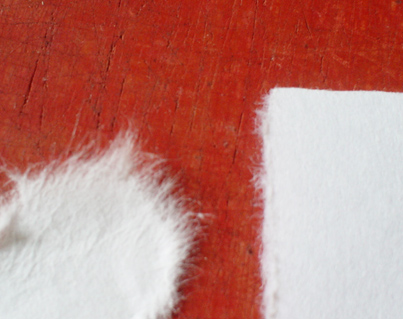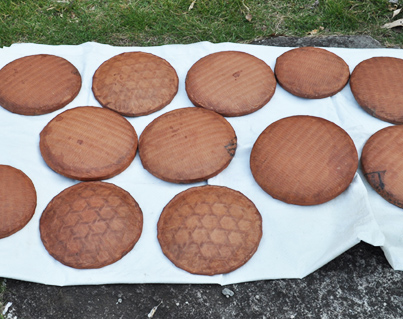
It has been made for 400 years from the paper mulberry plant (kozo), which is native to the area.
It has continuously been made using the raw materials and the clear water of the Yabe river.
Even among Japanese paper, Yame handmade Japanese paper is made from paper mulberry (kozo), and is a Japanese paper that is strong and sticky. The Yabe river is a perfect environment for the materials used in Japanese paper, the mulberry tree (kozo) and the paper bush (Mitsumata), have grown there naturally since long ago. Over 400 years ago the technique of paper making was passed down from Echizen (present day Fukui prefecture). To this day, Japanese paper is being made in the cool, clear running water of the Yabe river. Yame Japanese paper with its long fibers and strong strength is used for various applications, such as displays, sliding doors, shoji and Japanese kites.
Yame handmade Japanese paper has the oldest history in Kyushu. It is said that the master of the Nichiren Buddhist priests, Nichigen Shonin, began this process when he stopped in Yame during one of his nationwide pilgrimages.
Yame is a rich, natural land where the Yabe River flows. Nichigen Shonin believed that the Yabe river was a perfect environment for the materials used in Japanese paper, which includes the mulberry tree (kozo) and the paper bush (Mitsumata), which grew there naturally.
The paper making techniques were passed down from Echizen, which is present day Fukui prefecture. This was the 4th year of the Bunko Period (1595), over 400 years ago.
A bronze statue of Nichigen Shonin is standing in Fukuoji Temple in the Chikugo City Mizokuchi Area, with a takesu, which is a screen used for making Japanese paper, hanging from his neck.

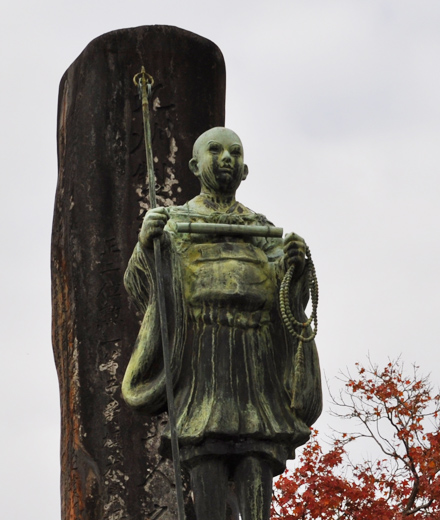
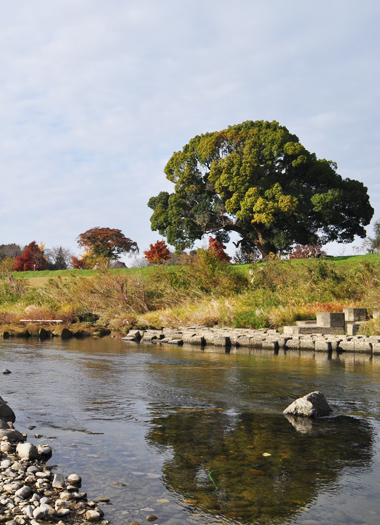
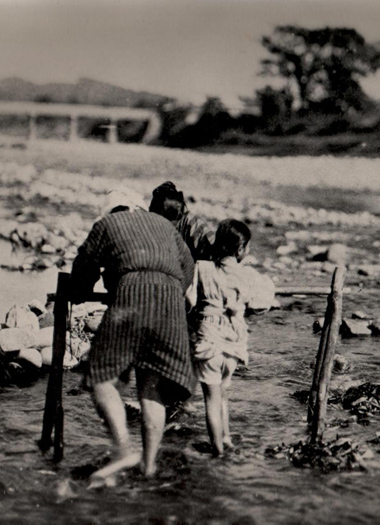
Meanwhile, there is also a theory that the paper making process was already passed down from the Nara Period about 1,300 years ago, as fragments of Japanese paper that were used in the Buzen and Chikuzen area family registers remain in Shosoin. Currently, the famous Yame Japanese paper is being made by six factories in the Yame City Yanaze area and Chikugo City Mizokuchi area along the Yabe River.
Yame handmade Japanese paper (washi) is made from Kyushu mulberry (kozo). Using mulberry (kozo), a strong Japanese paper can be made. The Kyushu mulberry (kozo) is characterized by its long fibers. Mulberry fibers are 7 to 8 mm in length while that of the Kyushu mulberry fibers are 8 to 10 mm. Mulberry fibers that are grown for a year are used. Fibers that are grown for two years become hard. For that reason, it is called, “ the pliable, textured paper”. It is durable and pliable which makes it perfect for use in manufacturing. There is machine made Japanese paper, but the handmade paper is stronger because the fibers are interwoven in a complex way, making it good for products such as shoji, etc., since it doesn’t tear easily. Ikanbari, overlaying washi repeatedly on a bamboo frame to create a shape,etc. are perfect for manufacturing since Japanese paper adapts well. Recently it has drawn attention as a fiber that is used in clothing, bags, and other products.
